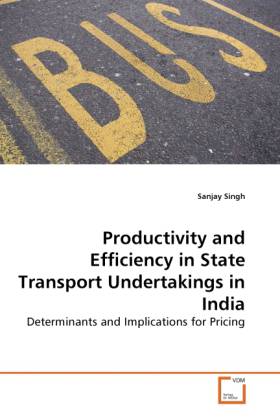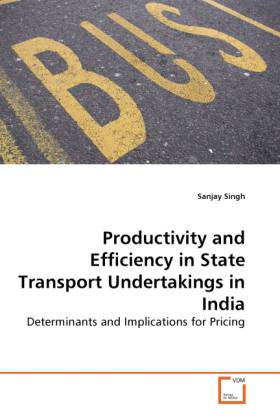
- Afhalen na 1 uur in een winkel met voorraad
- Gratis thuislevering in België vanaf € 30
- Ruim aanbod met 7 miljoen producten
- Afhalen na 1 uur in een winkel met voorraad
- Gratis thuislevering in België vanaf € 30
- Ruim aanbod met 7 miljoen producten
Zoeken
Productivity and Efficiency in State Transport Undertakings in India
Determinants and Implications for Pricing
Sanjay Singh
Paperback | Engels
€ 99,45
+ 198 punten
Omschrijving
Indian bus industry, since independence, has been organized along a mixed pattern of public and private sector ownership. The industry is dominated by publicly owned State Transport Undertakings (STUs) since private sector is highly fragmented. Despite their vital role, STUs in India have not been able to keep pace with the very rapid and substantial increases in demand of the past few years. Their service quality in particular has deteriorated, and their market share has been further reduced as passengers have turned to personalized transport and intermediate public transport. Apart from public criticism of inadequate and irregular services provided under unhealthy conditions of overcrowding and with minimal passenger comforts and amenities, STUs' financial performance has also been extremely poor and deteriorating over the years. In the present scenario, tackling the problem of financial crisis appears to be the biggest challenge for STUs. This book tries to address this issue by analyzing, both theoretically and empirically, the productivity, cost structure, and pricing issues in STUs.
Specificaties
Betrokkenen
- Auteur(s):
- Uitgeverij:
Inhoud
- Aantal bladzijden:
- 272
- Taal:
- Engels
Eigenschappen
- Productcode (EAN):
- 9783639288162
- Verschijningsdatum:
- 23/08/2010
- Uitvoering:
- Paperback
- Afmetingen:
- 152 mm x 229 mm
- Gewicht:
- 404 g

Alleen bij Standaard Boekhandel
+ 198 punten op je klantenkaart van Standaard Boekhandel
Beoordelingen
We publiceren alleen reviews die voldoen aan de voorwaarden voor reviews. Bekijk onze voorwaarden voor reviews.








